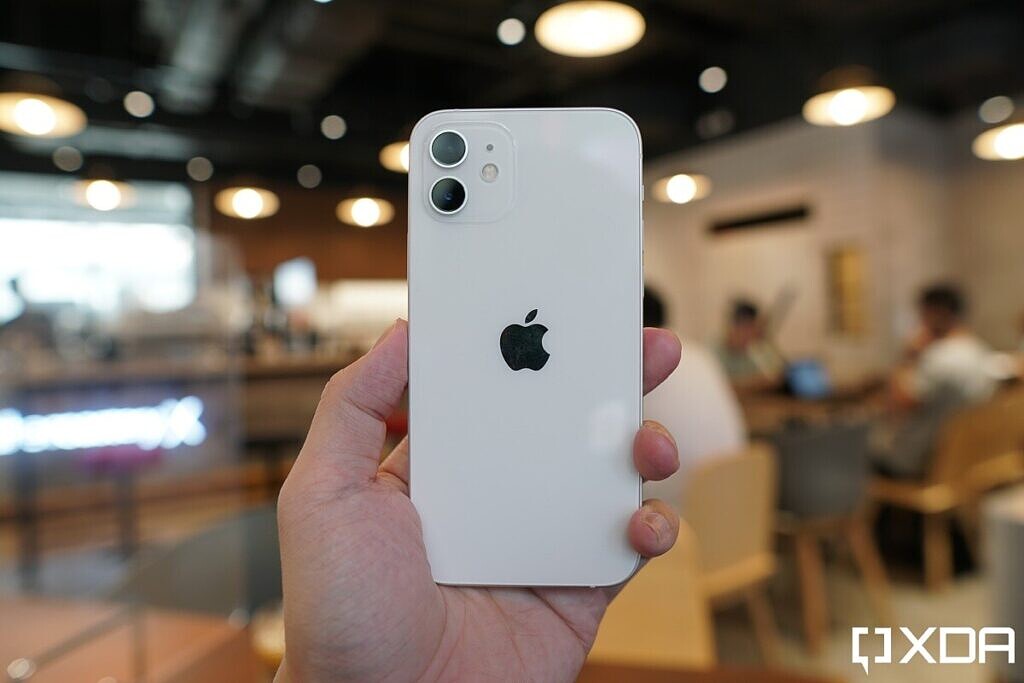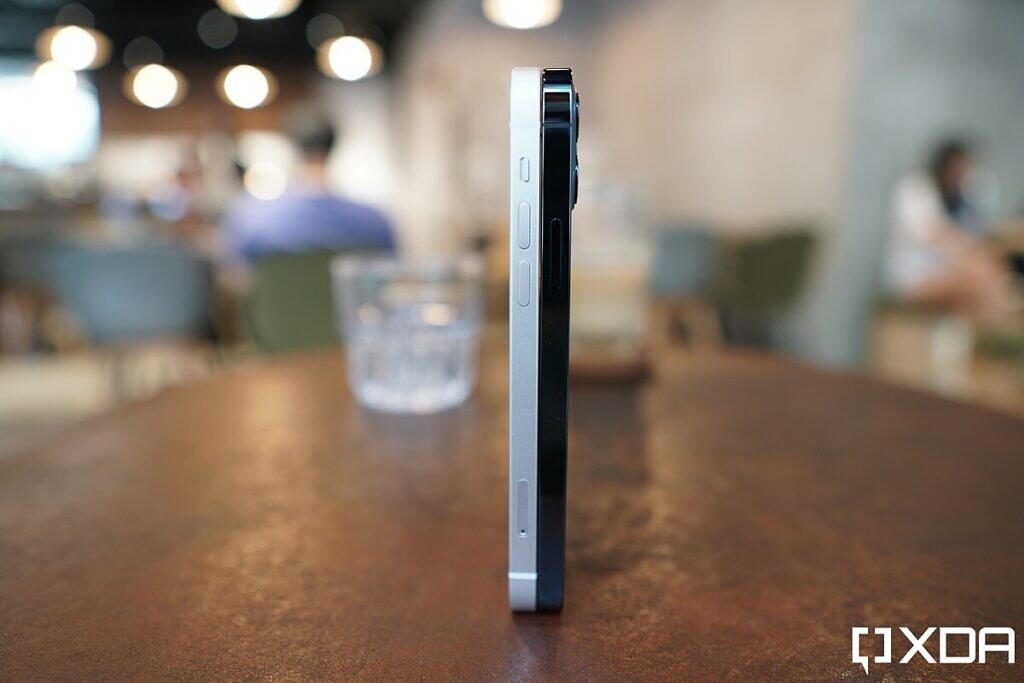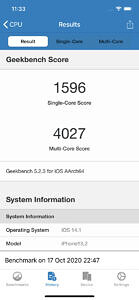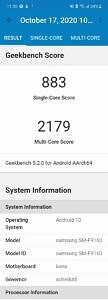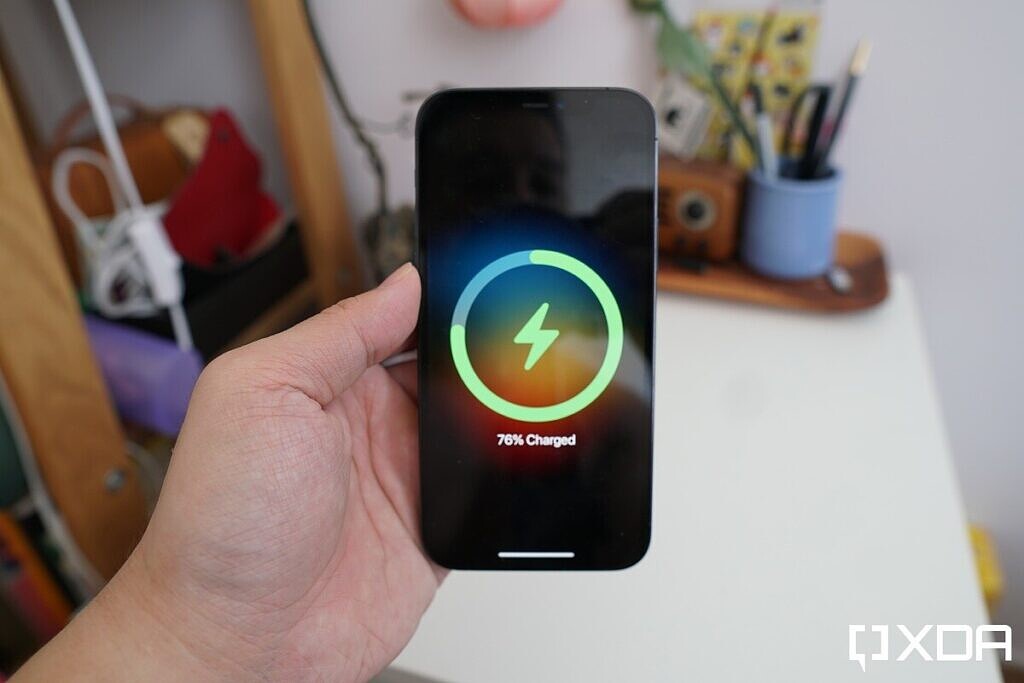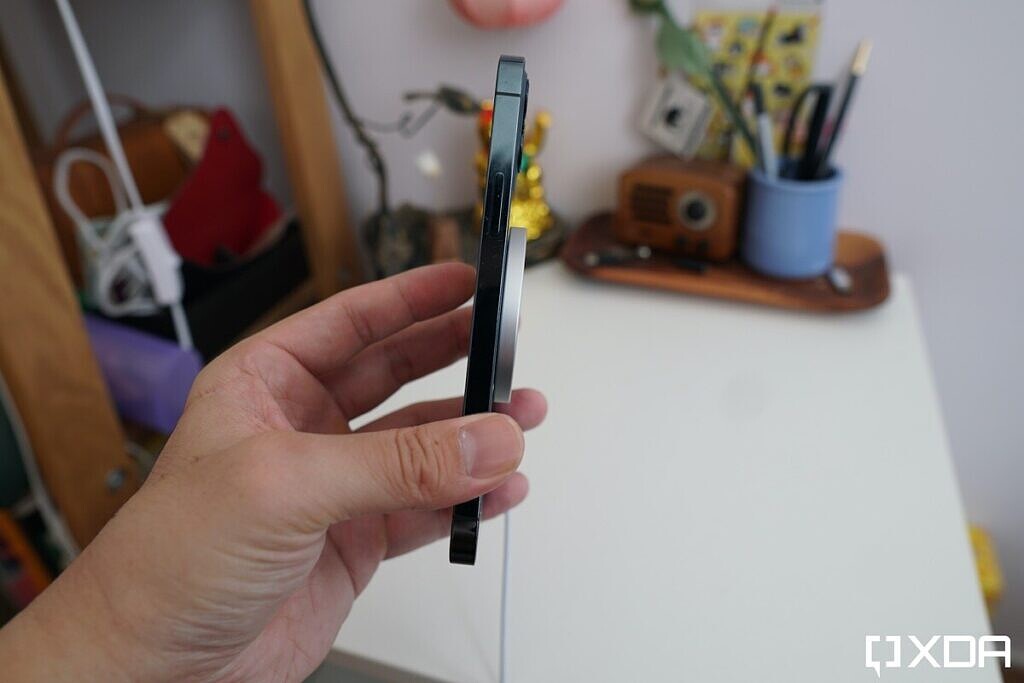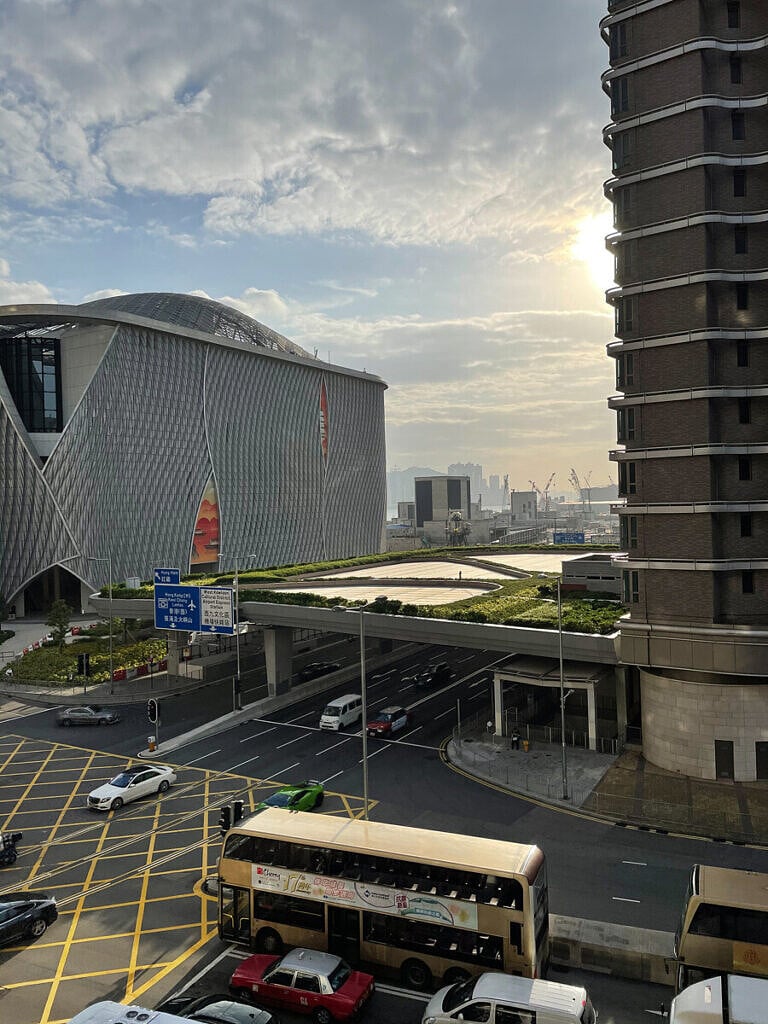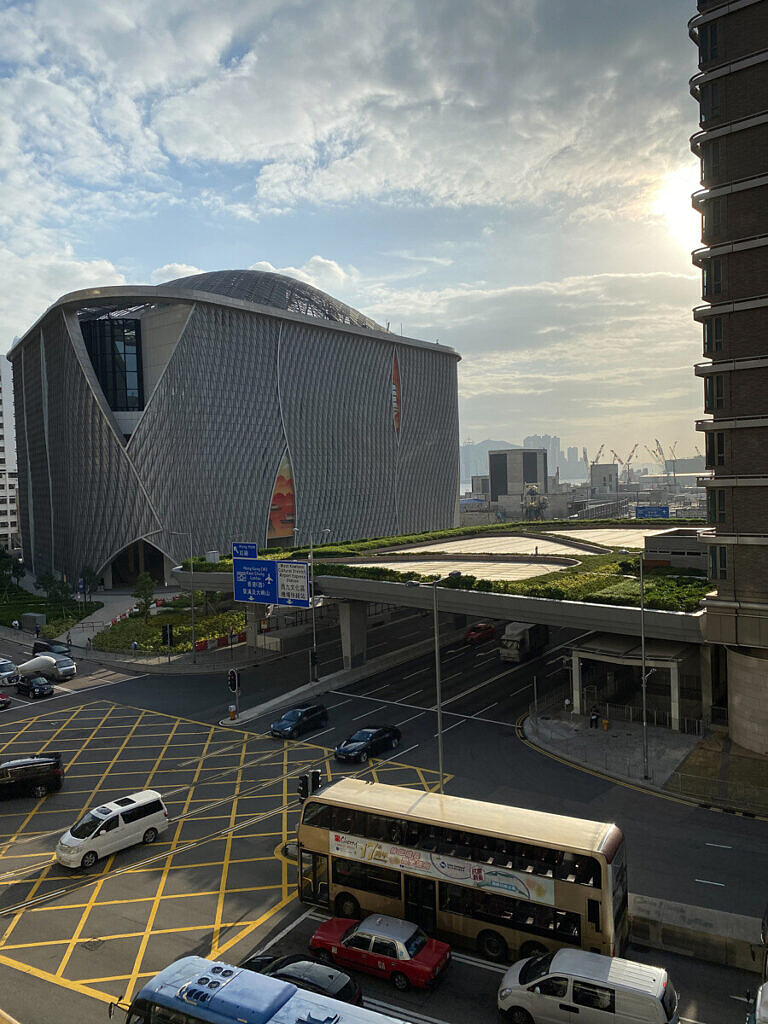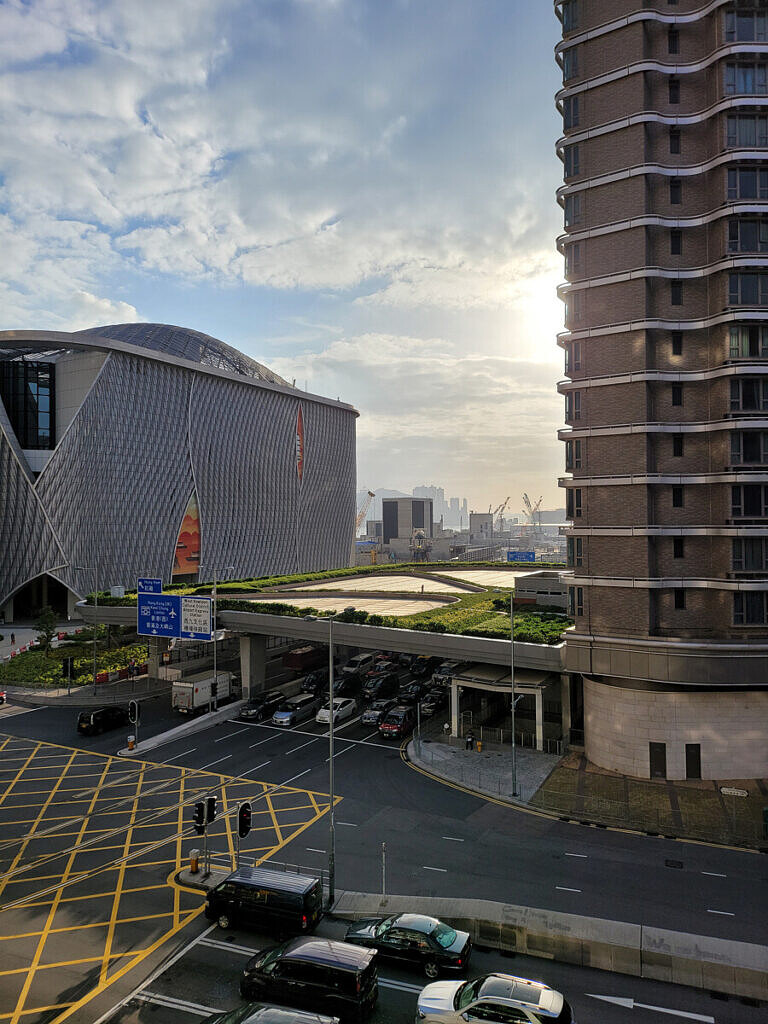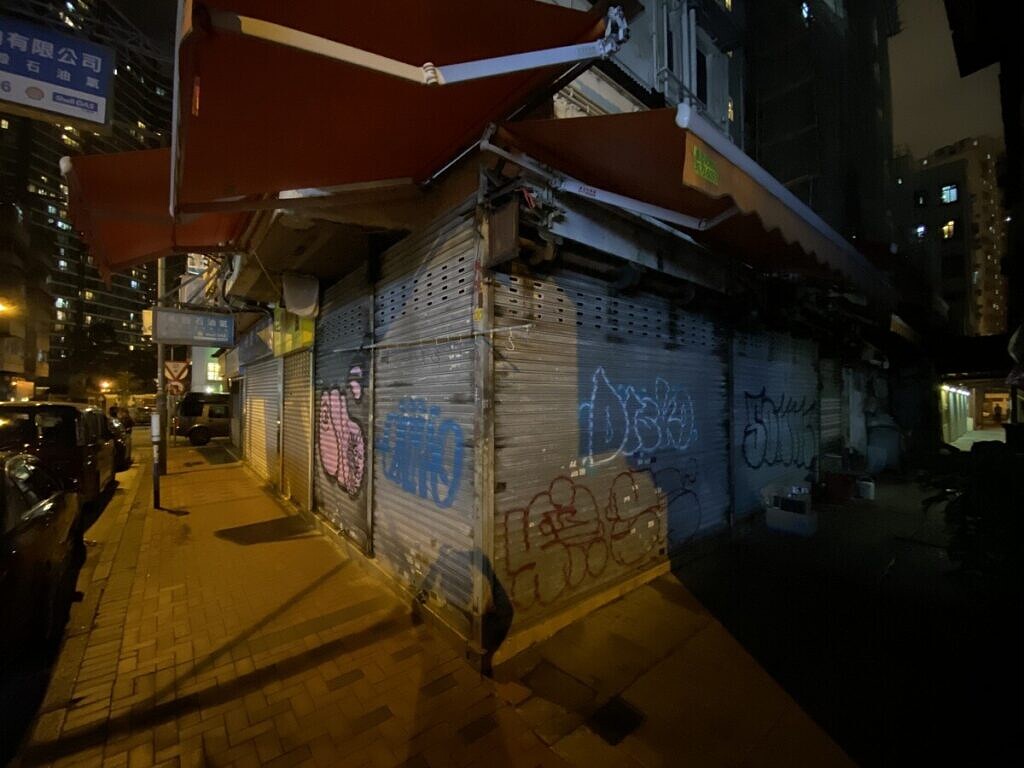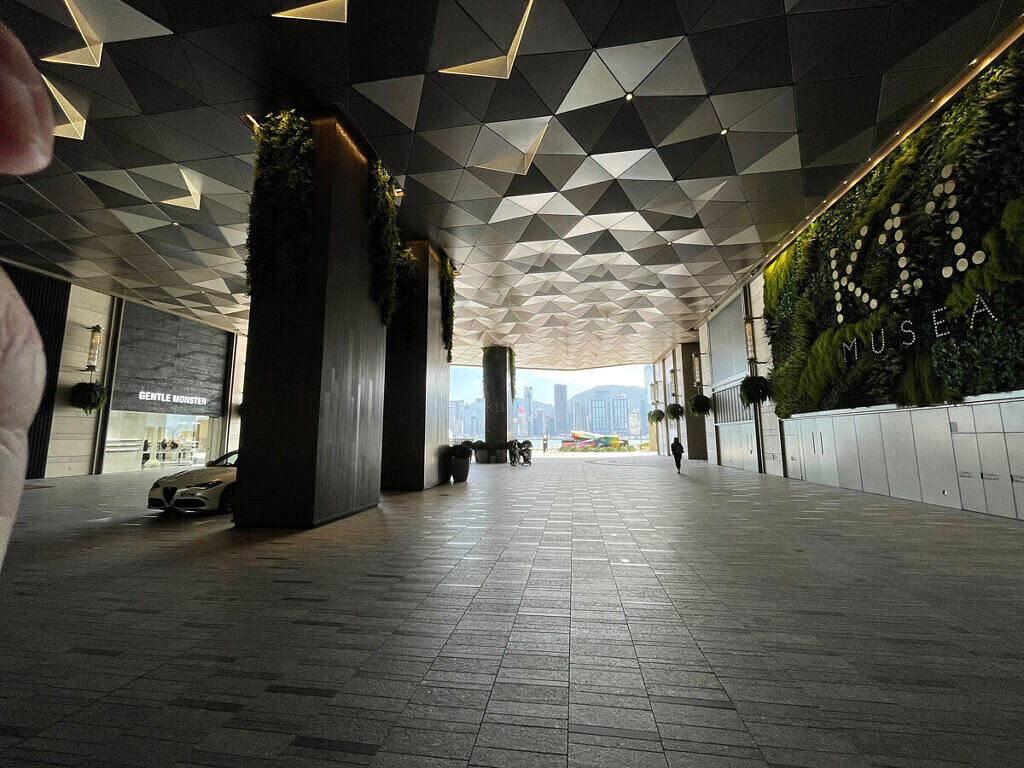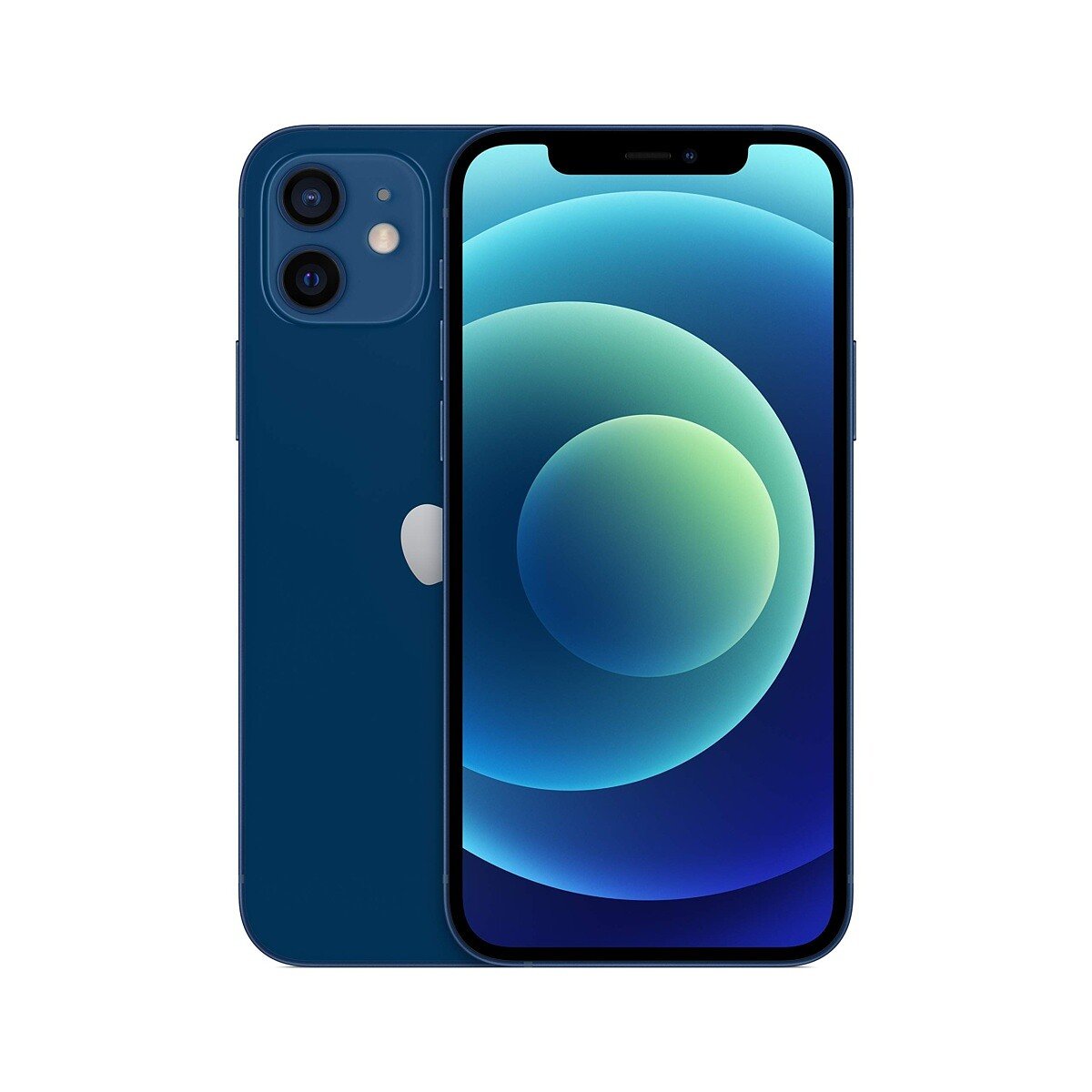The iPhone 12 series is Apple’s largest lineup ever, with four models, each fitting neatly into a particular market segment: the iPhone 12 Mini is for those who’ve been lamenting the escalating size of phones; the iPhone 12 is for those who do not want to spend too much; the iPhone 12 Pro is the more premium variant; while the iPhone 12 Pro Max is the super-sized, highest spec variant of them all.
The wide variety on offer is great, but it’s likely the standard iPhone 12 that will sell the best. At 6.1-inches and starting at $799, it’s arguably the goldilocks iPhone — neither too small nor too large and not too expensive (relatively speaking). Even the naming suggests this: there’s no need for signifiers like Mini or Max; it’s just the iPhone for this year.
I’ve been testing the iPhone 12 (along with the 12 Pro) for the past four days, and here are my impressions, 96 hours later.
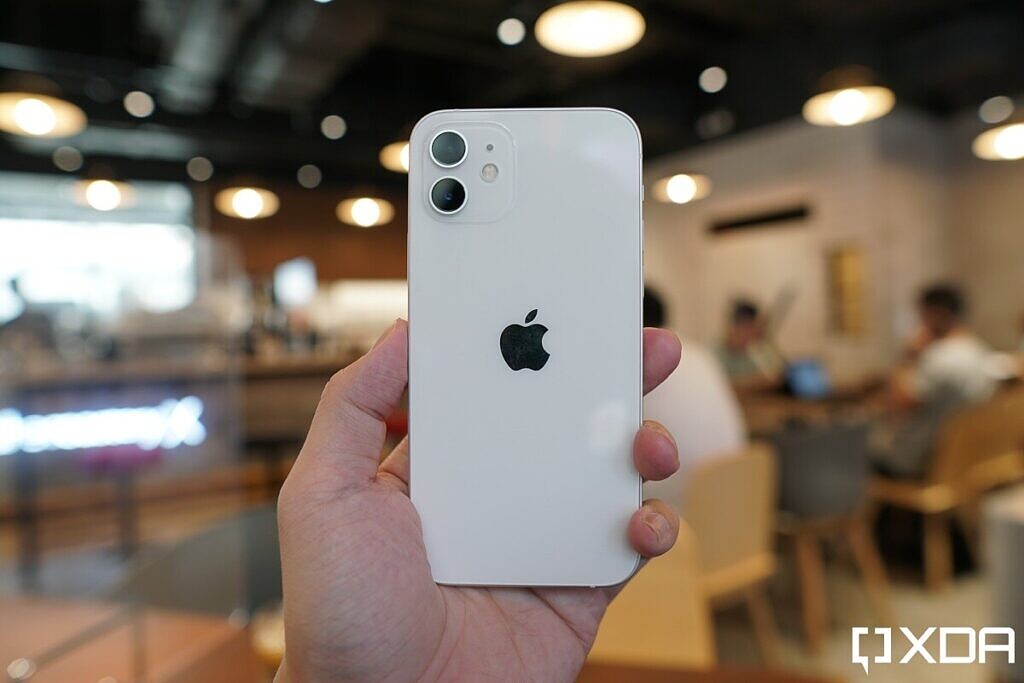
Apple iPhone 12: Specifications
| Specification | Apple iPhone 12 |
|---|---|
| Build |
|
| Dimensions & Weight |
|
| Display |
|
| SoC | Apple A14 Bionic SoC:
|
| Storage Options |
|
| Battery & Charging |
|
| Security | Face ID (TrueDepth camera for facial recognition) |
| Rear Camera(s) |
|
| Front Camera(s) | 12MP, f/2.2 |
| Port(s) | Proprietary Lightning port |
| Audio | Audio formats supported: AAC‑LC, HE‑AAC, HE‑AAC v2, Protected AAC, MP3, Linear PCM, Apple Lossless, FLAC, Dolby Digital (AC‑3), Dolby Digital Plus (E‑AC‑3), Dolby Atmos, and Audible (formats 2, 3, 4, Audible Enhanced Audio, AAX, and AAX+) |
| Connectivity |
|
| Software | iOS 14 |
| Other Features |
|
Hardware: 5nm, 5G!
Just from looks, the iPhone 12 doesn’t change much from last year’s iPhone 11, except that the aluminum chassis is now completely flat, making for a boxier look.
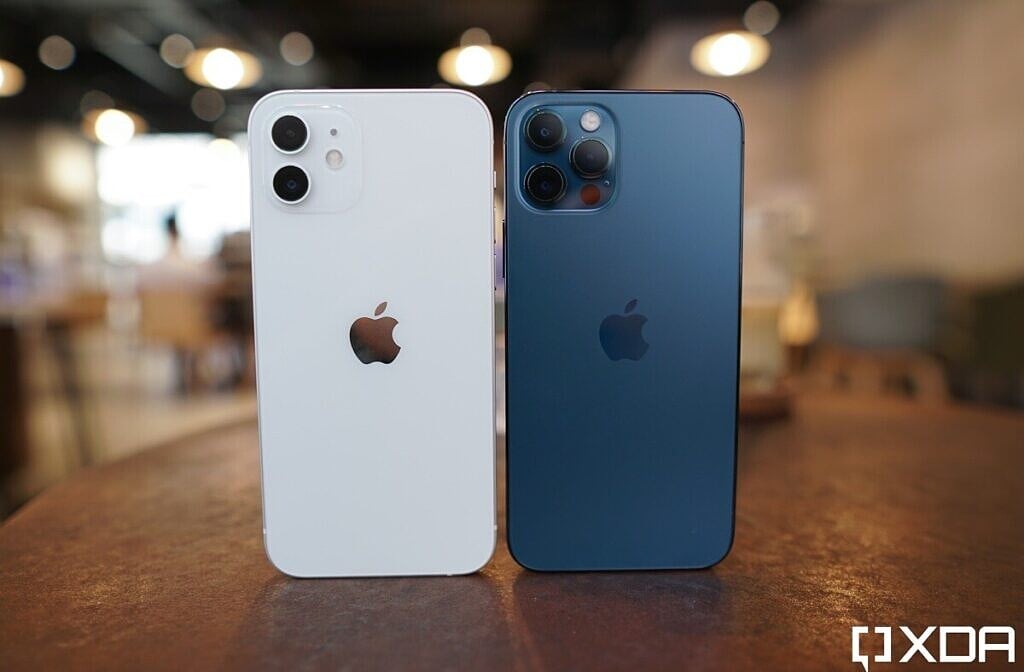
The iPhone 12 (White) and the iPhone 12 Pro (Blue)
I find this design slightly less comfortable to hold than the rounded edges of the iPhone 11, but I think the boxier look gives off a more mature, professional vibe. Plus, they allow the iPhone 12 to stand on its own on a flat surface, making my job of taking product shots easier.
I also enjoy how light the standard iPhone 12 feels at 164g since the most recent Android flagships top 200g.

The iPhone SE 2020 (Red), with iPhone 12 Pro (Blue), and iPhone 12 (White)
The bezels around the iPhone 12 are supposedly slightly thinner than last year’s iPhones, but I couldn’t tell. It may be because I don’t have an iPhone 11 to see side-by-side with the 12, and instead, I’m comparing the iPhone 11 Pro Max with the 12.
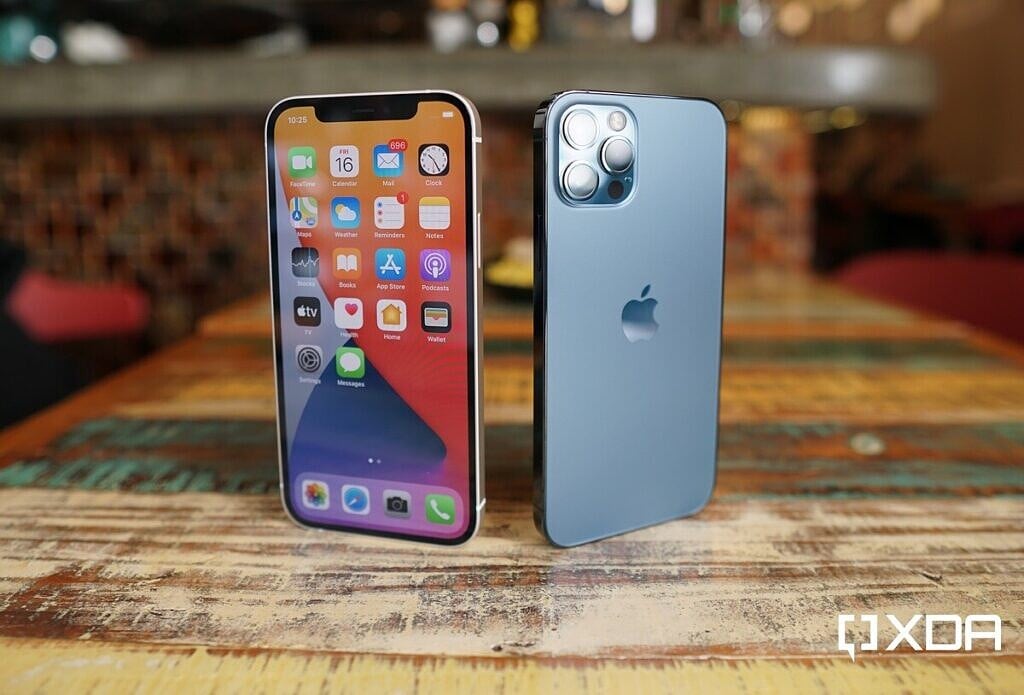
The iPhone 12 (left) and the iPhone 12 Pro (right)
But go beyond looks, and the iPhone 12 improves on the iPhone 11 quite a bit, more so than the 12 Pro improves on the iPhone 11 Pro. The iPhone 12 display gets upgraded to OLED display (or, as Apple calls it, Super Retina XDR) from last year’s LCD panel, and the main 12MP camera also enjoys a larger f/1.6 aperture for better light intake. The 12MP ultra-wide-angle camera’s hardware remains the same as before, but it now supports night mode for significantly better low light ultra-wide shots.
The biggest upgrade is in the silicon: the Apple A14 Bionic is built on 5nm technology. It’s still early days, but it definitely feels very powerful when editing videos (more on this later). On the Geekbench app, the A14 Bionic scored a 1,596 single-core and 4,027 multi-core, while the Snapdragon 865 Plus in my Galaxy Fold 2 scored 883 and 2,179, respectively.
The iPhone 12, like all the other iPhone models this year, supports 5G. This, technically, is the biggest new feature of these new iPhones, but the fact I waited this far down in the article to mention it should show you what I think of it. 5G isn’t ready for prime time right now. In Hong Kong, I tested the iPhone on local carrier CSL’s sub-6 network, and while I got good reception throughout many parts of the city, speeds were just a tad faster than 4G LTE even on the best day. I haven’t tested 5G in the US in 2020 so far, but I highly doubt results would fare much better there. Still, Apple adopting 5G is important for the industry, and I suppose now that carriers have Apple’s backing, we’ll see 5G improve sometime next year.
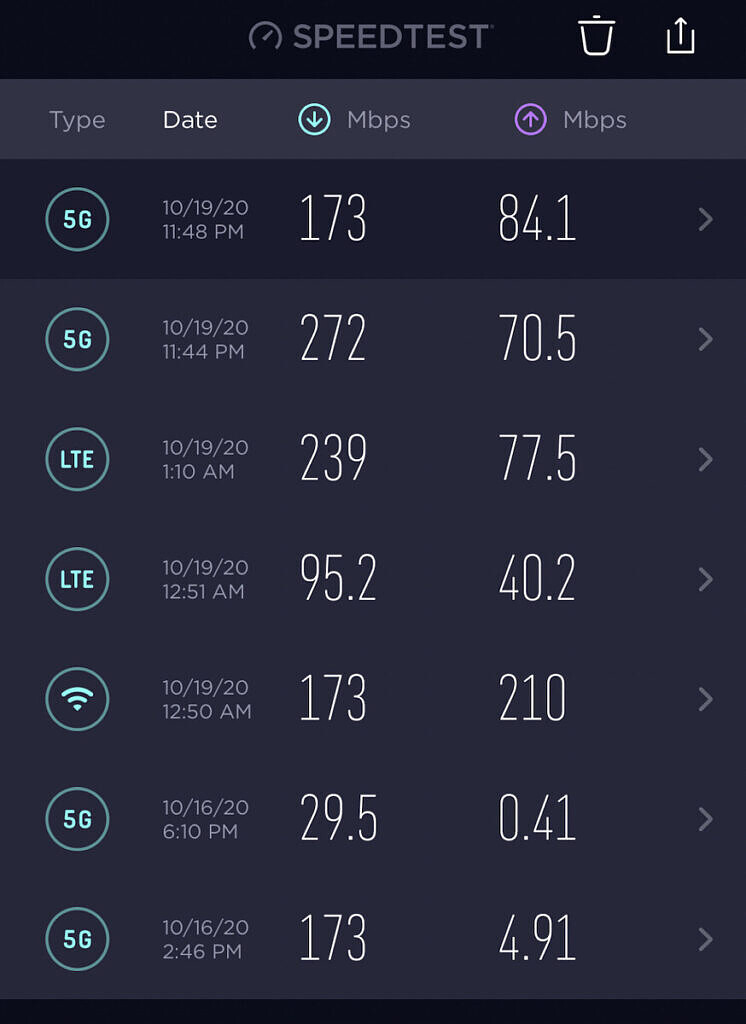
5G speeds on the iPhone 12 according to the Speedtest app
MagSafe
Another new addition to the iPhones this year is they all support MagSafe charging. Those familiar with the older generation of Apple MacBooks will know MagSafe as the proprietary magnetically attached connector that powered MacBooks from 2006 to 2016. The new MagSafe charger is part of a collection of different MagSafe accessories and resembles a small wireless charger that magnetically attaches to the back of the iPhone 12. The MagSafe disc can also top up several of my Android phones, including the Samsung Galaxy S20 FE and Galaxy Fold 2. Apple’s official press material doesn’t reveal many details about the tech behind MagSafe other than the fact it can charge the new Apple phones at 15W speeds. It is Qi-compatible up to 7.5W for other phones and accessories. I’ll do more testing in the coming days.
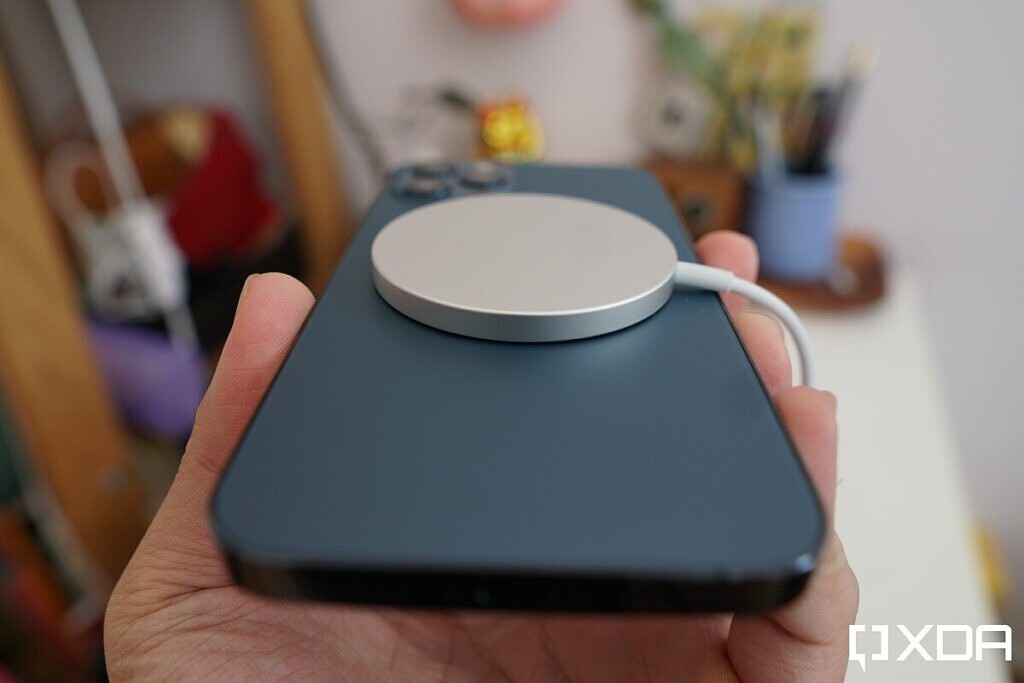
It does work quite well: the MagSafe disc clips onto the iPhone 12 with a satisfying snap, and charging begins just like that. It does bring slightly more freedom than wireless charging, as I can lift up the phone and keep charging. However, I could also achieve the same effect by simply plugging in a wired Lightning cable.
iPhone 12 Camera: Dolby Vision!
As mentioned earlier, only the main wide camera of the 12 received any significant hardware upgrade, with a lower/faster F-stop that Apple says boosts low light intake by 27% over last year’s iPhone 11. The difference in photos captured by the iPhone 12 and iPhone 11 Pro Max is virtually negligible during the day. In the below set of photo samples, the 12’s image is slightly better lit all around than the iPhone 11 Pro’s shot — you can see the area under the shading in the bottom right of the photo is slightly brighter sharper — but differences are minimal. I’ve included a shot by the Galaxy Z Fold 2 to compare.
But where you’ll see the biggest bump is ultra-wide-angle photos taken at night. This was a weak point of the iPhone 11’s ultra-wide last year, but now with night mode, the difference is almost literally night and day.
In fact, Apple has improved all the cameras’ software algorithms to find a better balance in real-time. I took this challenging shot (standing under heavy shading while pointing at harsh sunlight) with the iPhone 12, iPhone 11 Pro, and Galaxy Z Fold 2 (in this order below). The 12’s image has the best exposure, not blowing out the bright sunlight leading to the ocean while also keeping the heavily shaded area well lit.
I’ll focus more on still photography in the full review, but in the meantime, check out some more iPhone 12 photo samples captured over the past few days.
I think, for the most part, this phone makes incremental upgrades over last year’s cameras in terms of dynamic range and exposure, but it isn’t a huge noticeable jump — in still photo, that is. In the video department, the iPhone 12 is the first phone in the world to shoot in Dolby Vision, an HDR standard that dynamically adjusts metadata on-the-fly. So if a scene’s lighting or exposure level shifts, the metadata changes too to adapt.
And here’s where that A14 Bionic power I mentioned comes in: the iPhone 12 can also edit these Dolby Vision clips within iOS’ native Photo app. And I’m not just talking about basic editing like trimming the length of a video or applying a filter, but you can crop or rotate a video and have it processed within the Photo app. Check out some Dolby Vision video samples captured by the iPhone 12 in the clip above. Near the end of the clip, you’ll see a side-by-side video comparison against the Galaxy S20 FE. Although Samsung’s video capabilities are excellent, you can see the Apple’s video had better stabilization, more natural colors, and found exposure quicker as I shifted from an indoor shaded scene to outside under heavy sunlight.
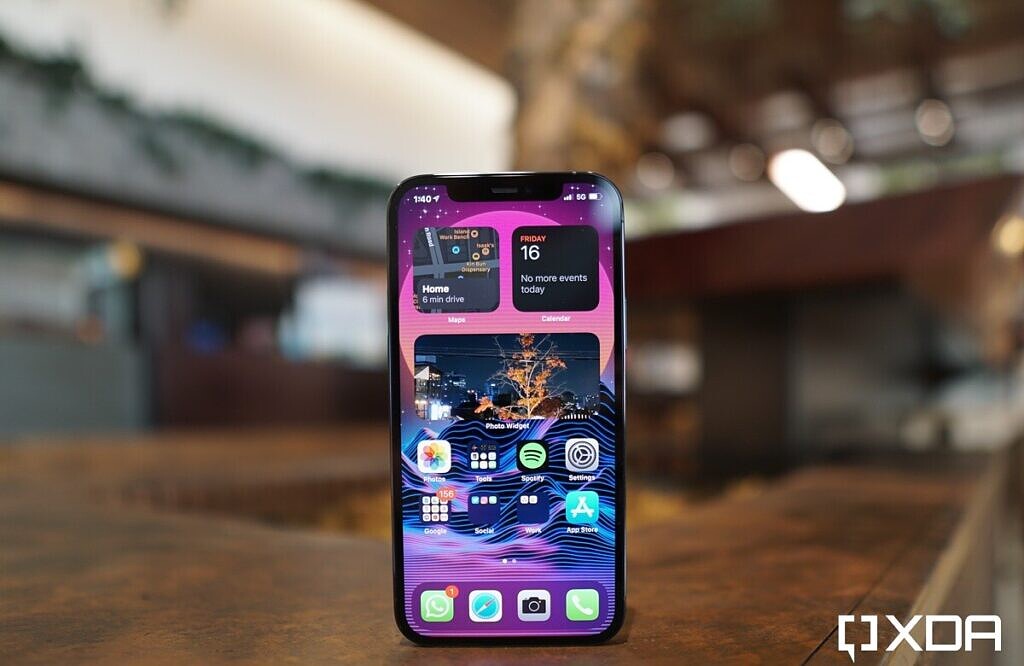
Other random tidbits and Early Impressions
Battery life has been okay so far, meaning it’s neither great nor bad. I’ve been using the iPhone 12 heavily every day with 5G connected, and it only managed to go an entire 14-hour-day on a single charge two of the four days of testing so far. On one particular heavy usage day, I left the house at 10 am and shot videos for an hour, streamed Spotify while surfing the web for another hour, and made a couple of WhatsApp voice calls; my battery drained to 25% by just 4 pm.
Apple builds great synergy between hardware and software so that the iPhone experience is usually more than the sum of its spec sheet suggests
The iPhone 12’s “just 60Hz” panel is fine. Do I wish the new phones had a 120Hz refresh rate? Yes. Do I think animations on my OnePlus 8T look a bit “faster” than on this phone? Yes. But the 12’s UI fluidity and animations are still very smooth. I think Apple does such a great job building synergy between hardware and software that the iPhone is usually more than the sum of its part, and the experience is more than what the spec sheet suggests. The 60Hz panel here feels “smoother” than 60Hz on an Android, closing the gap to the 120Hz screens in Oppo, OnePlus, and Samsung phones.
It sounds weird to say this during the middle of a pandemic, but $800 for the iPhone 12 seems like a good value compared to the $1,000 iPhone 12 Pro (I’ll have a piece comparing these two side-by-side soon), or the $1,400 Galaxy Note 20 Ultra. Now, of course, there’s the matter of the fact that iPhone’s OS is entirely different from Android, so if you’re an Android enthusiast reading this — it’s all a moot point anyway.
Apple iPhone 12
- The Apple iPhone 12 is perhaps the best-placed smartphone in Apple’s 2020 lineup, with a well-rounded package that delivers great value within the iOS ecosystem. The addition of an OLED display, a larger aperture in the camera, 5G, and design tweaks help the iPhone 12 stand out as its own phone.
I’ll be back with more iPhone 12 coverage throughout the rest of this week! Stay tuned, and let us know what you think about the new iPhone in the comments below!
The post iPhone 12 Hands-On: Apple’s best contender for a value flagship? appeared first on xda-developers.
